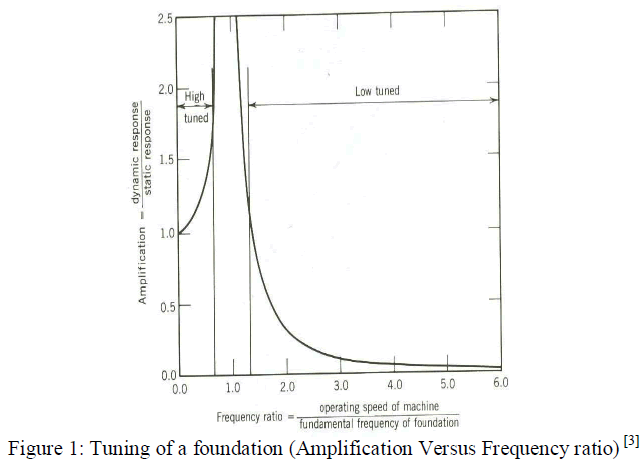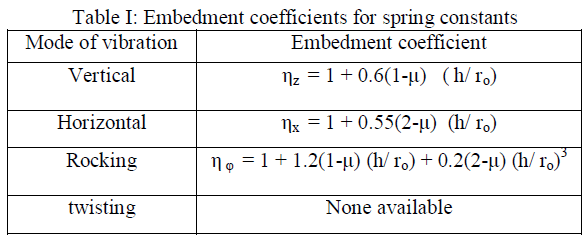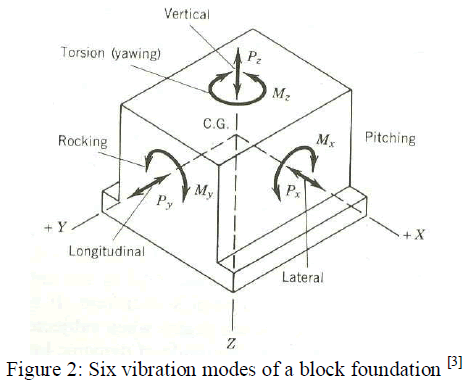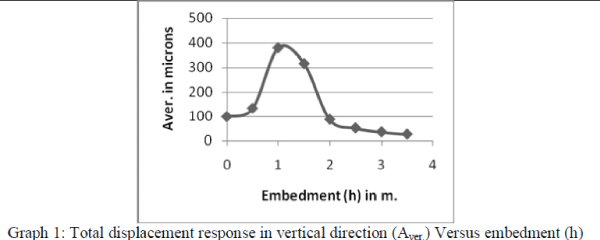ISSN ONLINE(2319-8753)PRINT(2347-6710)
ISSN ONLINE(2319-8753)PRINT(2347-6710)
Pramila N Tantubay 1, Shrikrishna D Patil2, Shripad V Kulkarni3
|
| Related article at Pubmed, Scholar Google |
Visit for more related articles at International Journal of Innovative Research in Science, Engineering and Technology
In recent years there is an explosive growth towards broadband access technologies which basically require higher bandwidth, better flexibility and lower cost access network and enable users to access internet in an “Anytime Anywhere” fashion. So Fiber-Wireless (Fi-Wi) is efficiently combination of both optical network and wireless network which can change the future of broadband services. By integrating the technical merits of both the technologies Fi-Wi broadband access network is proposed which provides an internet services with high speed at lower cost. The key issue in Fi-Wi network is the placement of optical network unit (ONU) since it provides interface between the optical and wireless network in order to making cost –efficient network different algorithms proposed. In this paper we go through different algorithms and analyzing which one is efficient for ONU placement in network.
Keywords |
| Fiber -Wireless (Fi-Wi), ONU Placement, Hybrid Algorithm, Genetic Algorithm. |
INTRODUCTION |
| In past decade there is a huge development in the field of broadband access network and technologies due to continuously increase in number of users towards internet facility which can gives a better platform to users to access internet in anytime-anywhere flexible manner. The broadband services basically require a higher bandwidth, better flexibility with lower cost access network to users. Recently, Fi-Wi technology itself is proving a main tool in the field of telecommunication by its own merits over existing technologies. The existing technology like Passive Optical Network (PON) offers better bandwidth and stability but at very high cost due to costly optical devices. One more promising technology is Wireless Mesh network (WMN) which provides services at lower cost with flexibility but having limited bandwidth due to channel interferences.So, efforts are put to combine the merits of existing technologies propose new technology named as “Fi-Wi” which providing better speed as we are approaching towards 4G and 5G communication level. |
| Fi-Wi supports a very large amount of data rate (Up to the order of Gbps) so any kind of failure in network causes a huge amount of data loss. Hence, survivability is major concern in Fi-Wi network because it is defined as ability of network to continue its services after a failure. Mostly failure occurs in back-end of the network i.e. in optical network side more than the front end (wireless network) in the network. Because wireless front end has the self healing property due to its mesh topology which helps it to reroute its traffic on a failure but optical back end has tree topology which having a more probability of getting failure. The basic architecture of Fi-Wi technology is shown below in figure 1 with their different components in back-end and front-end side. |
 |
| At the back end of the network, Optical Line Terminal (OLT) resides in the Central office (CO) and is connected via optical fiber to multiple Optical Network Units (ONU). At the front end, a set of wireless routers form a front-end in a network. End user (mobile and stationary users) can communicate through these nodes, which is called as gateways are connected to the optical side of the network. Usually, these gateways are attached with one of the ONUs [1] in the network as we can see from the given figure 1. Uplink and Downlink Transmission of all ONUs are controlled by OLT [2]. An end user sends data packets to a nearby wireless router of the network for uplink communication. Similarly, for downlink communication packets travel from OLT through the front-end to the end users. When user need to access internet services first he has to send the packets to the routers and then these routers send the packet to the ONU through multihop wireless path via gateways. After that this packet arrives to the OLT through feeder and distribution fibers and packets get injected into the internet backbone. |
| In Fi-Wi network ONU is an important device for establishment of communication between both the ends. Hence placement of ONU in the network with improved performance and for making cost-efficient network is more focus work for research purpose. This paper is composed of V sections they are organized as follow. Section II is comprised with Literature review. Section III presents Problem statement which occurs in back-end of the network due to highly cost of ONUs. Section IV describes different algorithms based on ONU Placement and their comparison. Section V presents Conclusion. |
LITERATURE REVIEW |
| In order to increase the speed of the network with high capacity, better bandwidth and better flexibility there is need to take care of survivability factors of the Fi-Wi network. As PON is a backbone of the network and has a tree topology (i.e. less reliable) hence probability of getting failure is more in optical side network. Rui Ma, and Lei Guo [3] focusing on the survivability of Fi-Wi against the single OLT failure and single ONU failure in the backend PON. In order to overcome the failure problem in single OLT they deploy backup fibers between segments with the solution by using Maximum protection and Minimum Deployment Cost (MPMDC). The failure of single ONU can be overcome by assigning several ONU in the same segment by using Maximum Protection and Minimum Hops Number (MPMHN). With the help of propose Auxiliary Graph-based Protection Algorithm (AGPA) failures with MPMDC and MPMHN are solved. With the ever-increasing concern over the global warming, energy crisis and emission reduction require more research attention. The extensive statistics indicate that both energy consumption and carbon emission induced by internet applications experienced raising problems in growth due to the significant amount of traffic. Thus, the development of FiWi also needs to take into account the energy saving issue. Lincong Zhang and Jiangzi Yang discussed in their paper [4] about Green Survivability factor in Fi-Wi network by using Energy saving Algorithm based on Sleeping Low-load ONUs (EASLO). They design a novel ONU architecture which is working with three efficient functionalities. |
| 1. Dynamic Energy-Awareness (DEA) |
| 2. Sleeping/Awaken Switch (SAS) |
| 3. Traffic Re- Routing (TRR). |
| In DEA according to the available capacity aggregate traffic in possible high load ONUs and increase the number of low-load and zero-load ONUs. The SAS examines that which ONUs having lower amount of traffic than the „„sleeping thresholdâÃâ¬ÃŸÃ¢Ãâ¬ÃŸ that will be put into sleep mode for energy-saving. In TRR before putting ONU in sleeping mode it should have rerouted the traffic to the available ONUs which has enough residual capacity. |
| In [5] a primal model is proposed for ONU placement. In this, the author proposed and investigates about network planning for optimum placement of base stations (BS) and ONU by several constraint including user assignment, channel assignment, capacity and interference. “Lagrangean dual relaxation method” is used to solve the primal model for the lower bound and the upper bound of the optimization problem. After simulation, PM is compared to a placement heuristic (called the cellular heuristic) and verified that the placement problem is quite sensitive. V.Naga Krishna and K.Sai Sarath Reddy [6] author done simulation work on cost efficient network and also improves overall QoS of system. By using DBA (Dynamic bandwidth allocation) techniques QoS of system can be improved which is done by WDM (Wavelength Division Multiplexing). By using software simulations, they made the performance evaluation of QoS parameters such as Bit Error Rate (BER), Quality factor and Jitter in Fi-Wi Networks. |
PROBLEM STATEMENT |
| The key issue in FiWi network is the placement of optical network unit (ONU). The ONU has a capability of transmitting and receiving both wireless and optical signal as well as wireless-optical signal conversion. ONU is responsible to collect traffic from front-end and send to OLT. Therefore, placement of ONU is a main role in network. The placement of ONUs in a network in such a way that it can support Internet traffic as well as P2P traffic from both the ends with reduced end-to-end delay. In this paper we will come to know about some different algorithms for ONU placement, the comparison between them and analyzing which algorithms will work for our suitable needs in terms of better performance with reduction in deployment cost of the network. |
DIFFERENT ALGORITHMS BASED ON ONU PLACEMENT AND THEIR COMPARISON |
| In Fi-Wi network ONUs deployed in unplanned ways as per user requirement so there is chances of increasing the numbers of ONUs in the grid for communication. So by proposing these algorithms we can able to reduce the number of ONU in such a way that minimum ONUs in the network can communicate with possible numbers of wireless routers. These make overall performance of network cost-efficient and there is requirement to place the ONUs in exact position in the network by Genetic Algorithm (GA) hence according to different literature survey following different algorithms are present. |
| 1. Random Algorithm |
| 2. Deterministic Algorithm |
| 3. Greedy Algorithm |
| 4. Simulated Annealing(SA) Algorithm |
| 5. Load balance ONU Placement(LBOP) Algorithm |
| 6. Tabu Search Algorithm |
| 7. Hybrid Algorithm and Genetic Algorithm |
| Random Algorithm (RA) |
| In RA network is divided into multiple non-overlapping regions and ONUs placed randomly in each region. This scheme having a less reliable connectivity in the network because of some part of ONU may be in bunch and some part may be void form. So limitation of Random Approach is tried to overcome in the next proposed algorithm. |
| Deterministic Algorithm (DA) |
| This algorithm is proposed after seeing Random Approch limitations, after dividing the non-overlapping regions of the network ONUs are properly are placed in center of each region. DA scheme is better perform in symmetrical network and offers low processing time for evaluation. However, this scheme is not suitable for non-uniform distribution of users i.e. for non symmetric network. |
| Greedy Algorithm (GA) |
| In Greedy algorithm network is divided into multiple region according to the users need and ONUs are placed in center of each region. The minimum distance between the users and primary ONU in the specified network are identified. After identifying the primary ONUs minimized the average distance between the ONU and the user. Greedy algorithm performs well with little higher cost than SA and very less processing requirement. |
| Simulated Annealing (SA) Algorithm |
| The SA algorithm works in five phases:- |
| a. Initialization – In first phase of SA the initial placement of ONU is obtained by greedy algorithm. |
| b. Perturbation - In second phase, SA relocates the ONUs randomly in the network. |
| c. Cost calculation – In this phase, the algorithm calculates the new cost of ONU placement and observes the new cost changes with respect to old cost. |
| d. Acceptance - In fourth phase of the algorithm, if the new cost of ONU deployment is less than old cost, SA accepts the relocation of ONUs else it remains with the old cost. |
| e. Update - In Update phase, SA iterates the same process until no further cost improvement occurs. |
| If no more perturbation phase can able to reduce the cost of deployment ONU then algorithm is said to be in „equilibrium stateâÃâ¬ÃŸ. |
| Load balance ONU Placement (LBOP) Algorithm |
| The LBOP algorithm consists of two stages ONU placement and load balancing. In first stage, the ONUs are placed in greedy manner one-by-one, and best location for each ONU is determined, so that number of ONUs are minimized and the entire wireless routers are connected to ONUs. In second stage load balancing mechanism takes place among different ONUs. LBOP algorithm minimized the number of ONU and therefore we get a cost efficient Fi-Wi network. |
| Tabu Search (TS) Algorithm |
| By using TS algorithm both types of traffic in the network can be supported and gave better performance for ONU placement. The main aim of this algorithm is to minimize the wireless hop number from wireless router to ONU. Tabu search algorithm used to find the best position of ONUs in network so that overall wireless hop count minimize in the network. But this work does not focus on, how to minimize the number of ONUs in a network so it does not provide users a cost-efficient network. In order to make better network we are moving towards HA and GA with less numbers of ONU and best position in the region. |
 |
| `Above Table 1 shows the comparison in between different algorithms on the basis of their performance quality, advantages and their related problems/limitations occur in all proposed algorithms. The optimum and bestter performance of Hybrid and Genetic Algorithm are take attention in more research purpose. |
| Hybrid and Genetic Algorithm |
| Hybrid and Genetic algorithm work in two stages: - Firstly by Hybrid algorithm, numbers of ONUs are reduced so all wireless router should be connected to its primary ONU. Secondly, we find the best position of remaining ONUs in its own grid by the mean of Genetic algorithm and further minimize number of ONUs in order to make cost efficient network. |
| 1. Hybrid Algorithm: -This is first stage of algorithm from Fig.2 it is clear that from Onu1 four wireless routers are connected, from Onu3 two wireless router connected and so on. It is also clear from figure that Onu2 and Onu12 has no wireless routers to communicate. Hence this ONUs can be removed from the network. After the removal of these ONUs only 14 ONUs are required in the network. We arrange the ONUs in descending order according to number of wireless router in the set. ONU having higher numbers of routers is placed in the network and rest is removed from the network. |
 |
| 2. Genetic Algorithm: - In this stage, initially we place ONU at the center region of each grid. Then we form the set of wireless router for each ONU only in its own grid. It means that ONU communicate to that router which is present only in its own grid. If there is no wireless router in that particular grid, then we remove that ONU. After execution of first stage only 7 ONUs are required in the network. These ONUs were placed at the center of in its own grid. Now we apply the second stage of proposed algorithm.GA first gives the best position of 7 ONUs in the network. After applying GA and steps of first algorithm only 4 ONUs are required in the network. They are Onu5, Onu6, Onu7, Onu10 and Onu11 with best position, as shown in Fig.3 |
 |
CONCLUSION |
| The main objective of new technologies is to provide best services to users with lower cost terms. Main part is to be considering here is for making cost-efficient network with better capacity, speed and in better flexibility manner. Hence for cost-efficient network number of ONU should be placed in optimal way. As we can see that up till now work on ONU placement is done by applying Hybrid and Genetic algorithms is the best solution in terms of deployment reduction in cost but from practical implementation we can see that number of ONU is reducing but number of users were as it is in available network. We cannot predict exact number of users or traffic in a specific region of network. These may causes interference between communications and also weaken the network in terms of efficiency. In that way we can say that method which provides us better results in reduction of ONUs and reducing the interference between users is effective and cost-efficient network. Through extensive simulation, we have determined that our algorithm requires less number of ONUs than in previously discussed algorithms. So we can say that, the HA and GA algorithm is better for deployment of cost-efficient FiWi network. |
ACKNOWLEDGMENT |
| I would like to thanks my guide Prof. Shrikrishna Patil and my Co-guide Prof. Shripad V Kulkarni for their valuable guidance and suggestions while writing this review paper. |
References |
|